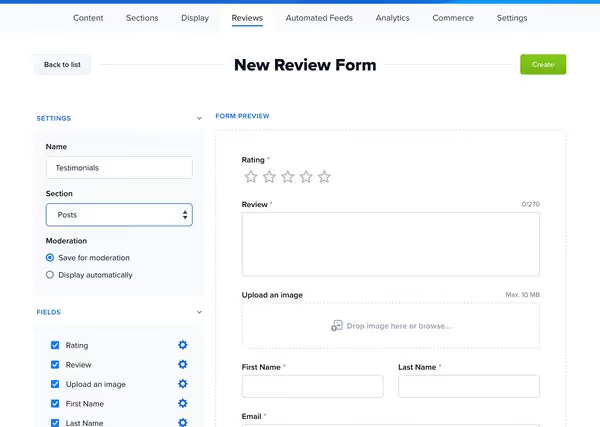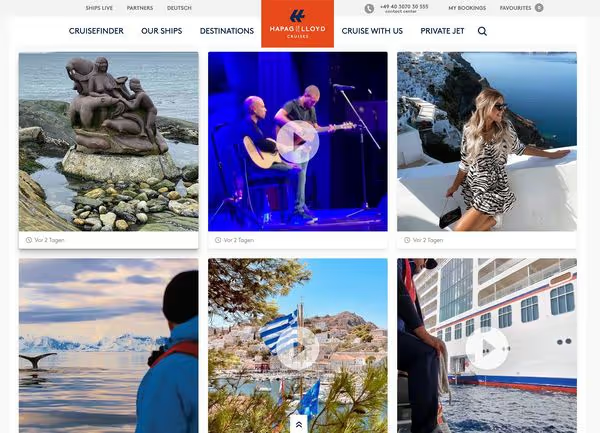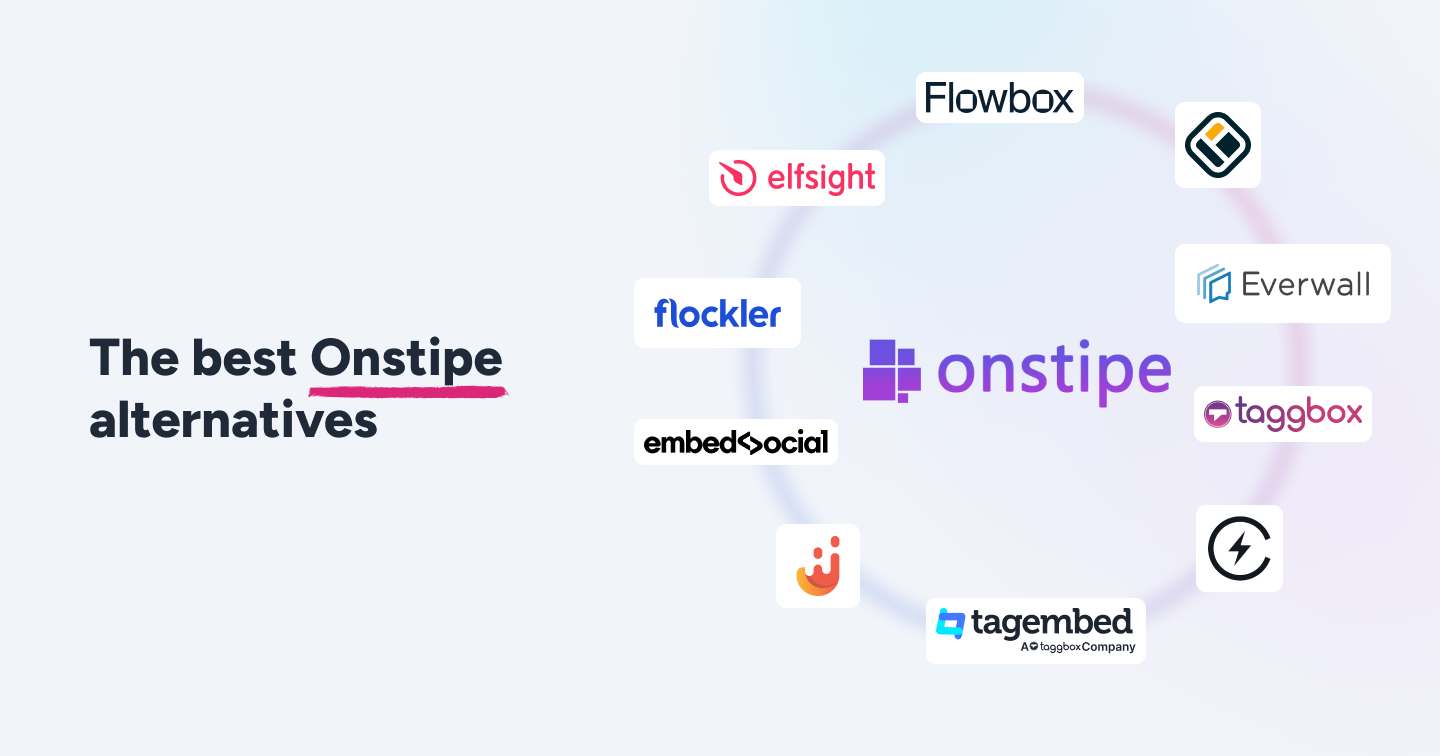Summary
Online reviews are the ultimate salesperson for e-commerce, hotels, restaurants, and many other industries, but elsewhere, marketers aren't quite capitalizing on the full potential just yet.
Especially for products and services where all or most research happens online, and the customer isn't able to view, experience, or touch the product before purchase, customer reviews and social proof are often the deciding factor. Regardless of the carefully designed product descriptions, images, and videos generated by the brand and manufacturer, customers want to see third-party endorsements proving the true value and confirming the brand’s promises.
It comes as no surprise that 90% of consumers check online reviews before visiting a business, and B2B customers are not so different. After all, B2B buyers apply some of the same research techniques for their business and personal lives.
Three ways to collect and display online reviews
So how do webshops, hotels, and restaurants gather and show customer reviews today?
Getting started is straightforward and doesn’t require any technical expertise. Businesses typically see the increase in conversion rates and sales very quickly, and the product feedback helps them improve their products and services. Also, customer stories can help to bring a personal voice into marketing and sales materials. Direct quotes from customers are excellent content for any product description, and authentic statements help other website visitors better understand the offering.

Ready to get started? Here are three ways how to collect and display online reviews:
- Collect online reviews on your website
- Curate social media hashtag and brand mentions
- Drive traffic to third-party review websites
1. Collect online reviews on your website
When getting started with online reviews, the first step is to create a review form for your website. Once the form has been created, you can use the review page link in emails, social media, and other apps and services.
For example, when a customer purchases your product, you can share the link to the review form in a marketing email a week or two after successful product delivery. Most likely, the email marketing platform for your company is already set to send automated emails based on events like successful delivery.
In addition to marketing automation tools, you’ll need software to manage and view the submitted reviews. If you don’t have an online reviews and feedback management platform just yet, sign up for Flockler’s free trial and start collecting reviews in minutes.
After signing up, choose 'Reviews' from the available content sources.

At the start, and if you haven’t been using Flockler before, we add a handful of example reviews to your Flockler to make it easier for your team to test how the end-to-end solution works, from collecting to displaying reviews.
The next step is to create a custom reviews form for your website. On Flockler’s form editor, you can customize each field and their order and add custom fields as well.

After completing the form creation, you’ll get an embed code which you can add to any website and page and then start collecting online reviews. Without technical expertise, the embed code shows your custom form on the page, and you can edit it anytime via Flockler.

The above image shows an example from our website, where logged in Flockler customers can leave us feedback and share the things they like the best and where they would like us to improve. In addition to helping the marketing on our website and social media posts, reviews and feedback help us prioritise our product development.
The final step is to choose how to display online reviews on your website. On Flockler’s Display tab, you can set up unlimited and fully custom design Walls, Grids, Carousels, and Slideshows for your brand to show customer reviews on any website and digital service. Here’s an example of a Wall layout showing customer reviews for a bike shop:

Does your organisation already gather and display online reviews? Sign up for Flockler’s 14-day free trial and get started in minutes. Our free trial includes the full product, and you don’t need a credit card when signing up.
2. Curate social media hashtag and brand mentions
Another great way of gathering customer reviews is to launch a user-generated content campaign, asking your customers to share with a branded hashtag how they are using your products and services.
The key benefit of this mechanism is that social media shares automatically get visibility within the customer’s network of friends and followers. Posts from our friends typically have a higher engagement than company posts, and we also trust them more than carefully designed brand marketing.
In addition to building awareness on social media, you can embed social media feeds on your website to show social proof and drive conversions.
Many hotels, travel destinations, and other hospitality businesses do that already. On the Hapag-Lloyd Cruises website, you can find a social media feed with images and videos from customers, influencers, and the company itself.

For e-commerce, showing hashtag and brand mentions is a must. Sohome has a fantastic example on their homepage. The #sohome hashtag feed welcomes a website visitor with inspiring user-generated content - social proof increases time spent on site and drives sales.

With tools like Flockler, it’s easy to do precisely the same as Sohome and embed an Instagram feed on a website and any digital service.
If you sell multiple products and services, you can take this approach further and tag products on curated social media posts. Worktop Express, a solid wood worktops webshop, shows how webshops can display user-generated content and drive traffic to product pages.
The 'Our Customers' Creations' element on their homepage displays a curated carousel of customer reviews from Instagram.

And when you click one of the content items, you will find both the customer review and the related product(s).

It’s hard to imagine any marketing more powerful than showing social proof from customers and linking that authentic content to product pages.
For more inspiration, learn how your webshop can curate and show shoppable Instagram feeds and increase sales.
Does your company gather hashtag and brand mentions? Sign up for Flockler’s free trial and gather user-generated content and customer reviews in a few minutes.
3. Drive traffic to third-party review websites
For some businesses, the website isn’t the primary sales and marketing vehicle. For example, restaurants are often found via Google search and customer review websites like Tripadvisor. Therefore, these companies might prefer driving customers to leave feedback on those services instead of gathering reviews for their websites. The more (positive) reviews on Google and Tripadvisor, the more likely their restaurant is highlighted at the top of the search results.

To increase the volume of feedback and search visibility, create a Google review link and start sharing that on all customer communications. If you are running a restaurant or have a physical store, consider showing QR codes to make it even easier for customers to leave a review. You can easily generate these using tools like The QR Code Generator (TQRCG), which lets you create scannable links that direct users straight to your Google or Tripadvisor review pages.
And don’t forget to embed Google Reviews on your website. Social proof increases sales and encourages others to leave a review too.

Would you like to display online reviews on websites, apps, and other digital services? Sign up for our 14-day free trial to gather customer reviews and hashtag mentions, and show social proof driving sales.







